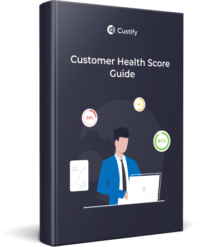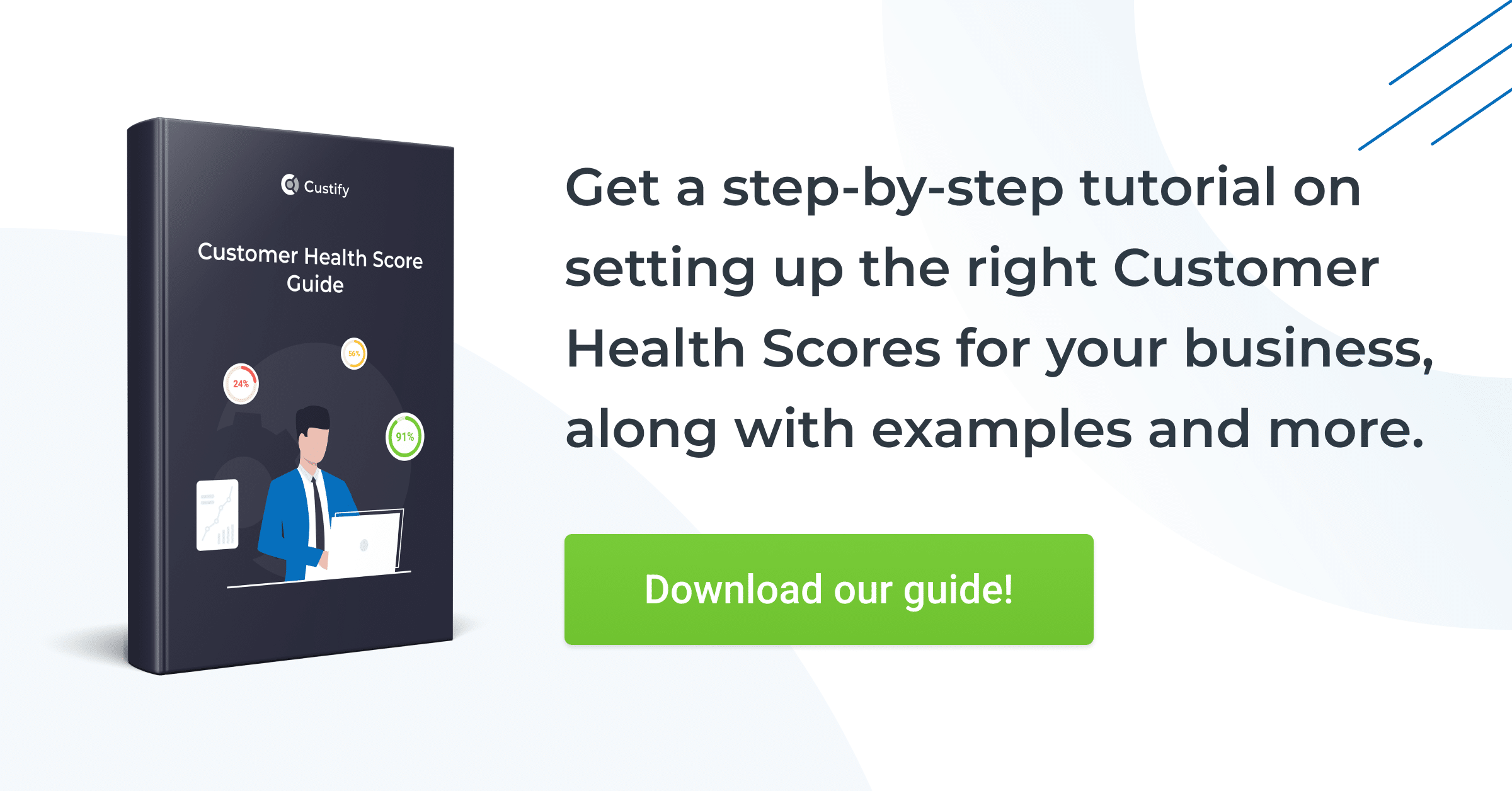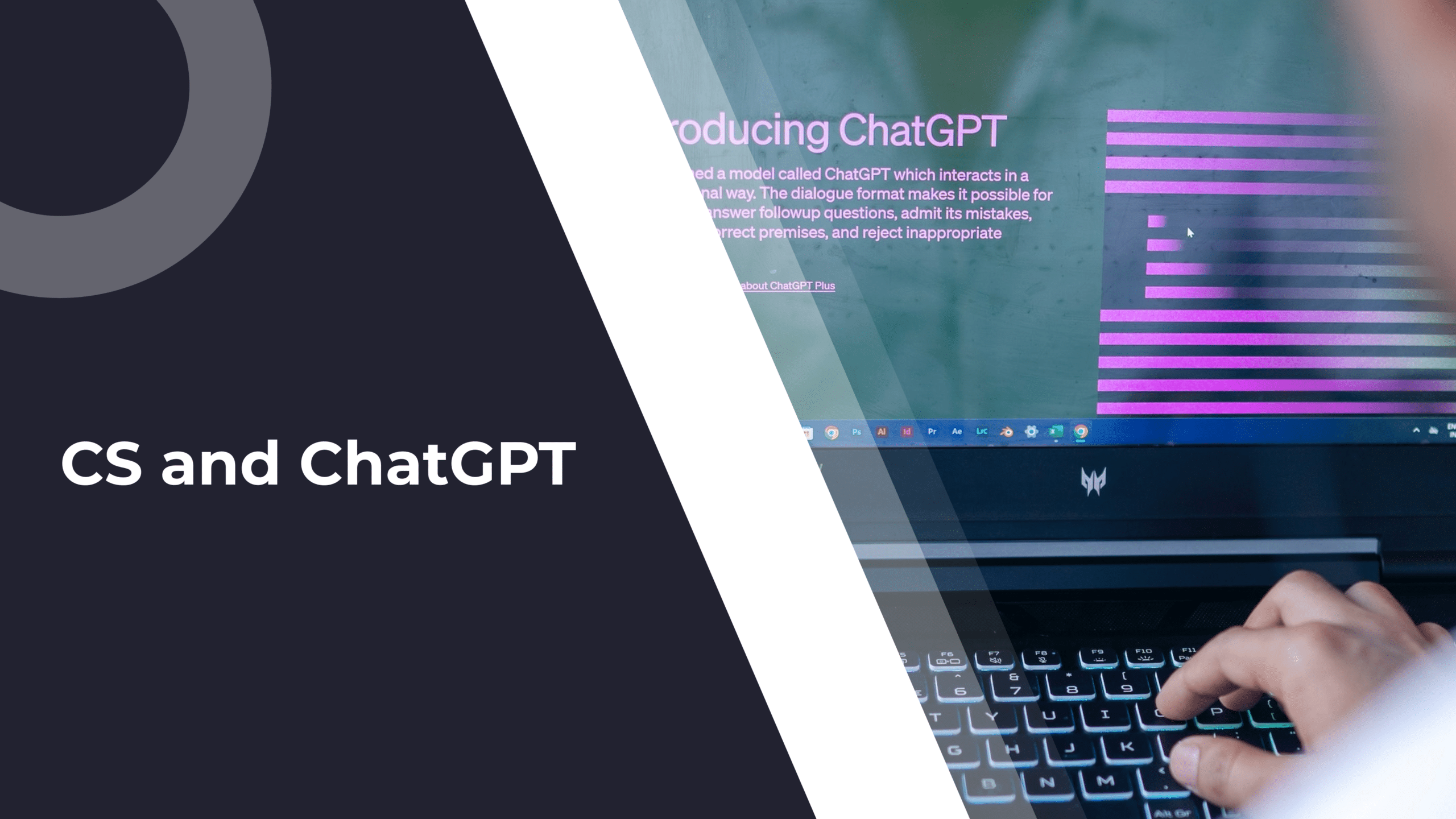In recent years, customer health scores have become standard practice in SaaS. But for all their popularity, their use is still marred by improper setups, lack of a strategic approach, and poor data hygiene.
And one thing stands out too – the use of a single health score per account. As much as we’ve advanced in SaaS, this has sadly remained the same. I think it’s high time we made a more significant change to the way we think about customer health.
To that end, I’m presenting you with a complete review of health scores to pair with our PDF. By the end, you should know everything about:
- What customer health scores are, how powerful they can be for any SaaS, and how to use them
- The differences between multiple health scores and what we call the “global” one
- How you can effectively decide on health scores, measure them, and use them at scale
- Some FAQs
- Some benchmarks for the most-used SaaS metrics that can turn into action-packed health score indicators
Ready to dive in? I recommend downloading the PDF to have on hand as you go through this article.
What Is a Customer Health Score?
A customer health score is a custom-built metric specific to a customer, indicating the status of a particular retention or growth goal. Customer health scores are typically tied directly to KPIs or product features and are expressed on a scale of 1 to 100, color coded from red to green, or a combination of the two. Health scores are often used to tell whether a customer’s in danger of churning and trigger automations to proactively save them.
Why Do We Need a Customer Health Score?
As per the most recent report on the state of CX, the top three challenges in delivering a great experience today are competing priorities, aligning business objectives with CX, and building a customer-first culture. Fortunately, all three can be solved through the use of effective customer health scores.
Along with this, building health scores correctly unlocks additional benefits throughout your customer-centric organization:
- Directly improves retention
- Multiplies referrals
- Improves detection of churn precursors
- Optimizes churn prevention tactics
- Helps improve customer education tactics
- Drives customer value-addition
- Helps identify and bank on upsell opportunities
- Assists in turning high-ARR customers into partners
These are the reasons why I believe health scores are a foundational tactic for customer success today. But the true value is one you’ll see for yourself once you start putting together the pieces to engineer insightful and scalable health scores for your accounts.
How to Use Customer Health Scores in SaaS
Fortunately, calculating Health Scores has become the default for most SaaS companies. Since in most cases, your success directly depends on how your customer base uses your product, it makes sense to track as many health indicators as possible.
For example, for many of our customers we start engineering health scores based on product feature usage rate and frequency. If those health scores become orange or red, it’s a sure sign of potential churn down the line – keep in mind that these signs can be visible even months prior to the actual moment of churn.
Having these indicators furthermore enables churn analysis at scale, i.e. looking at every touchpoint and finding out which customer behavior leads to churn. Here’s how Szymon Gołyski of BOLD uses health scores:
We determine what actions (or lack of them) are the most common in the users that churned and we react each time the pattern starts. It gives us a great edge and we can win back more customers. It also helps us to engage our trial users into the app, as we have a dedicated onboarding based on what the user has done vs the ideal scenario.
A few more things to be mindful of when it comes to health scores in SaaS:
- The most important metrics you can track are always going to be tied to your product’s value-additions
- Customer education will play a vital role in growing those health scores into green indicators of success
- You will learn to identify friction points you can fix, aka moments in the customer journey when customers get frustrated due to various reasons (such as poor UX or bugs)
The Global Health Score
When many in SaaS talk about health scores, they’re referring to the global health score (GHS) – i.e. the overarching, account-level score that indicates the health level for that customer.
But what’s the formula for the global health score?
It’s not that easy. While some platforms have specific formulas that are set in stone, at Custify we like to leave it up to the CSM and make it customizable for each account. Because pooling together every metric and every KPI to gain a highly-specific, weighted understanding of a customer simply makes the most sense to us.
Having a Global Health Score on top of the individual ones helps CSMs see an overall status of an account’s health, but offers very little in terms of explanations. That’s why I think looking at the multiple health scores you set per account is fundamentally more important and provides more in-depth information.
The Winning Strategy: Multiple Health Scores
To prepare our health score guide, I consulted over 250 customer success leaders. Throughout these discussions, three things stood out:
- Working with multiple health scores is the way to go
- Weighing these health scores based on importance is key
- Having a GHS based on each individual score’s weight brings the entire strategy together
One of the reasons why having just one single Health Score is inefficient is because this doesn’t reveal the reason behind the score. For example, let’s say one of your customers has a Health Score of 44% (out of 100%). That’s below 50%, so it’s really bad!
But do you know why? You might have no idea, so you need to dig deeper to find out.
Throughout our experience working and advocating for multiple health scores, we’ve also determined a few important caveats:
- You also need a custom CSM rating that supersedes all other health scores (because the CSM always knows best)
- You need to be able to set up your own health score formula for each score and one that uses them to calculate a global score – leaving it up to your particular CSP will always be ineffective. This has been our mantra at Custify since we started and the more we work with health scores, the more we believe in allowing CSMs the freedom to set things up themselves (with our help, of course).
- You need to figure out what healthy and at-risk accounts look like in terms of health scores for your particular business case. After all, it’s no use looking at these indicators if you’re not sure when you need to act.
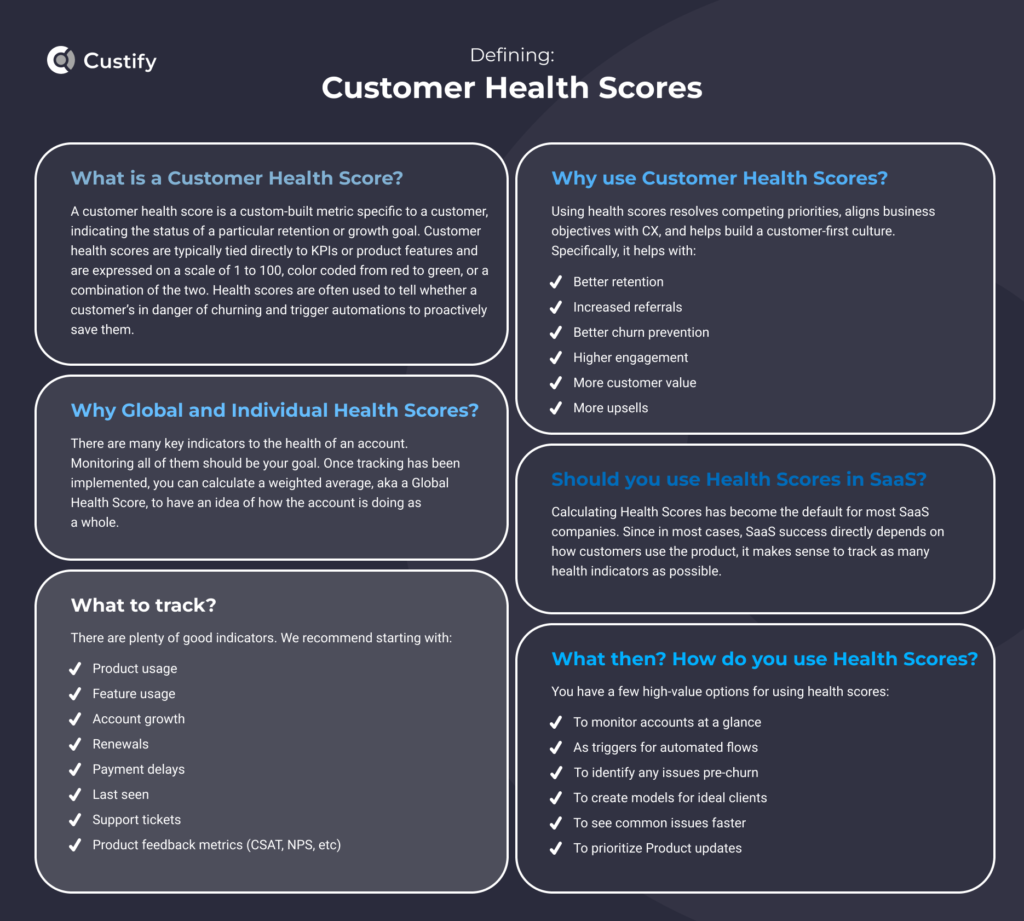
How to Measure Customer Health Scores
At this point you know you need to track everything that’s relevant to you, your business objectives, and your customer outcomes. But how do you settle on these metrics?
1. Decide which Customer Health Score Metrics to Track
Before you start measuring, you need to know what you should be looking at. So a significant part of your early game should be spent putting together SMART OKRs and KPIs for customer success. Think things like increasing your ARR, product adoption, or renewal rate – whatever matters most to your particular use case.
Once you know these goals and how they’re measured, you can start looking for health scores and metrics. Here are some examples of useful health scores commonly seen in SaaS:
- product usage, along with the depth of usage (the percentage of your product they use) and breadth of
- usage (the number of licenses they have)
- usage of your product’s core features
- onboarding progress (how many steps they’ve completed)
- account growth over time
- length of the relationship
- number of renewals completed
- number of payment issues
- number of support tickets
- customer feedback scores (like CSAT or NPS)
- referrals or marketing mentions
Determining how Health Scores will fit into your overall Customer Success Strategy will help you choose the right tactics to employ with your CSMs. Remember also that Health Scores vary significantly by industry, so you should adapt based on your audience and type of product.
2. Track Customer Health Scores as Part of Your Daily Workflow
Now that you have the metrics and health scores, tracking them is the next step. The way you set everything up should help shed light on your current goals for any account with just a quick glance over your customer success dashboard.
Here’s some more advice on setting up tracking for your customers’ health scores:
- Automate Health Scores. Set notifications that trigger when health scores see certain negative or positive changes (in Custify, we call these Signals)
- Address Churn Proactively. Figure out which of your health score signals typically lead to churn and step in to prevent it.
- Engage with Customers. Based on what you’re tracking for each customer or segment of customers, you can develop engagement tactics that help you connect with them on a deeper level.
- Create personalized Health Scores. Sometimes it makes sense to have account-level health scores that no other customer has just because of the nature of that account, or because it’s a high-value customer, or even when they’re a good fit for your business*.
- Share the Insights with Your Team. Customer success will always be a team effort (unless the company is new and you’re the only CSM). If something stands out as particularly important or insightful, you can share it to the team’s Slack channel to encourage discussion and growth.
*Reminder: your interest in your customers can be more strategic than just high ARR, sometimes it can lead to long term business partnerships and even acquisitions or mergers. In fact, if you’re in a leadership position like Director or VP of Customer Success, this type of strategic thinking is a key responsibility of the job.
3. Balance Customer Health Scores Based on Weight and Impact
Not all Health Scores are equally important. One example I always like to give is a far-too-common one – logins. While yes, it can be useful to see how many people log in every day, it’s not in any way a measure of your success. So you shouldn’t put it on the same level as product usage health scores
To correctly weigh the impact of one health score against others, you simply have to:
- Place it appropriately on your dashboard – if it’s important, it should be one of the first things you see, if it’s not that important, you can place it further down
- Draft a guideline so everyone on your CS team knows what sort of benchmarking this score has and its overall importance to the account / company.
- Define the health score distribution – particularly if your CSP, like Custify, uses color coding for your health scores. Ask yourself: what value puts this health score in the green? How about red or yellow?
- Reduce its impact on the global health score – regardless of how your GHS formula looks, there are ways to make a factor matter less. For example, a metric like logins should have low-to-no impact on your Global Health Score
In the graphic below, you can see that in Custify we let you pick the impact of a health score, determine its distribution, and assign it to specific segments.
4. Create a Health Score Formula for Each Account and Individual Score
There’s no such thing as a magical formula for determining account health. Instead, you calculate your health score formula from scratch when you analyze and combine the metrics that matter most for your product. Every SaaS business is different, so don’t assume there’s a one-size-fits-all Customer Health Score formula that will work for all products.
By simply going through the process of creating Customer Health Scores you’ll eventually reach an ideal formula for your business. Or maybe your perfect setup involves several ideal formulas, one per customer stage (onboarding, discovery, regular, long-term, etc.). We recommend setting up each individual health score, then tweaking their impact on the global one until you reach a balance that makes sense.
Your Health Score particularities make that formula work for you. Others might inspire you, but in the end, only you can know for certain what your healthy customers look like.
What Is a Good Customer Health Score?
Trick question – a good health score is one that works for you both in terms of what it tracks and of its value. You might be tracking feature usage per account per month and believe that 10 is a good value to put that health score in the green. Therefore, a good health score for you is “Feature usage” with a success indicator of 10 or more, which then based on your HS formula would equal a Feature Usage Score of 88/100.
Sounds easy, right? The next part involves repeating this logic for every health score you’re tracking and then monitoring them per account over time (Figure 1).
| Client A - Health Score Trend | |||||
| Mon. | Product Usage Score (High Impact) | Support Score (Medium Impact) | NPS (Low Impact) | Global Health Score | Trend |
| Jan | 85 | 90 | 70 | 84 | ↗ (Improving) |
| Feb | 88 | 85 | 72 | 84 | ↗ (Stagnating) |
| Mar | 82 | 80 | 74 | 80 | ↘ (Declining) |
| Apr | 79 | 75 | 75 | 77 | ↘ (Declining) |
| May | 84 | 88 | 77 | 84 | ↗ (Recovering) |
Figure 1 – Health Score Trends Over Time Table
A table showing trends over time for Client A using 3 distinct health scores along with the Global Health Score. Note that each health score has a different impact on the GHS.
How to Use Customer Health Scores in Customer Success and Improve Them
1. Create a Well-Defined Playbook for Customer Engagement
By regularly monitoring Customer Health Scores, early signs of increased friction or declining customer engagement become easier to identify.
Most of the actions that influence your relationship-building efforts benefit from being well-timed with your customers’ progress. Here are a few examples:
- proactively reaching out on a regular basis
- checking in after a problem was solved
- following up on previous interactions
- identifying upselling and cross-selling opportunities
- providing information on new features or events.
If you truly want to drive customer success, it’s critical to constantly keep an eye on your customers’ lifecycles and health scores in order to make informed decisions that drive value.
You’ll get the chance to address issues before they cause churn, and your product will stay top-of-mind. You’ll capitalize on opportunities and increase adoption rates. It’ll undoubtedly bring value in the long term.
2. Automate as Much as You Can
Often in the life of a CSM, it gets difficult to efficiently keep track of all these metrics without the help of playbooks and automation.
Automation flows are useful additions that help you improve loyalty, adoption, conversion, and churn rates while customers move through their lifecycle stages. All you require is a good CSP with automation capabilities. In Custify, we call these playbooks – basically sets of tactics that help you drive Customer Success by identifying these exact moments for your customers and acting accordingly.
You can also have simple triggers – another form of automation – that trigger a simple action (such as a message to the client, the CSM, or another teammate) whenever a health score passes a specific threshold. In Custify, we call these triggers “Signals”.
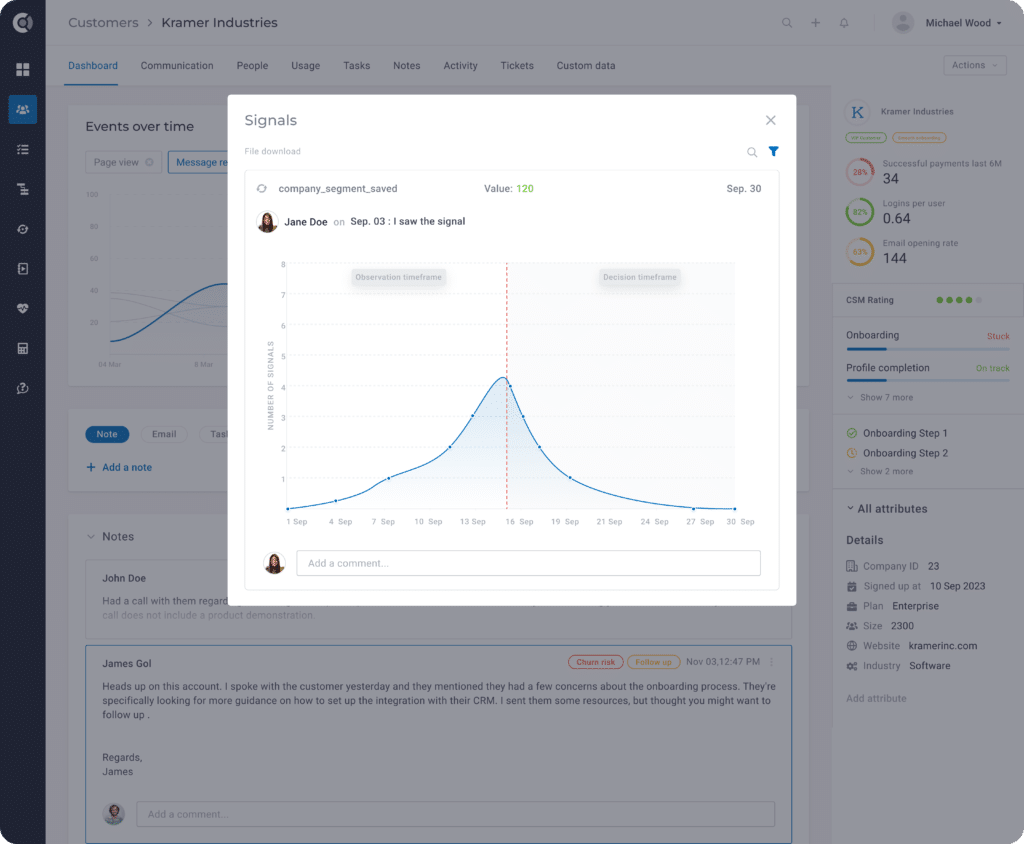
Based on your Customer Health Scores, you can create playbooks or signals that can automatically trigger a range of actions like:
- assigning accounts to team members (for example, problematic customers to more experienced CSMs)
- sending messages to customers with low engagement
- notifying you if certain Health Scores drop under a defined value
- creating tasks for CSMs to proactively get in touch
- identifying upsell and cross-sell opportunities
- recognize good candidates for referrals, case studies, or testimonials
🤖 Note: AI and machine learning have also been seeing a significant increase in use with regards to customer health scores. According to the most recent State of AI in CS, 45% of CSMs see data analysis and reporting as the top activity for AI, while 73% point out it’s an opportunity to automate the process of finding at-risk accounts.
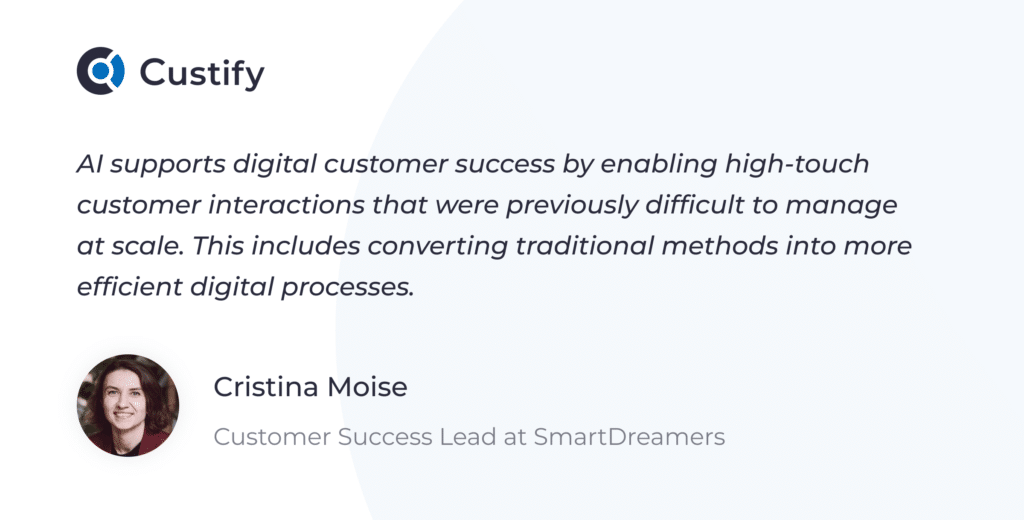
3. Improve Customer Success Alignment
By using health scores and customer success automation together, you’ll be able to improve your overall customer engagement and support CS alignment through a customer-first approach that drives revenue and growth for both you and your customers.
Simply having relevant information about churn likelihood, product usage, lifecycle phases, and other KPIs can help take your CS program to the next level. Creating a grading scale based on those datasets will tell your entire organization how a customer is doing and what your team should be doing at any given point in time (Figure 2).
Down the line, automating customer success based on that action plan is the logical next step. For example, after a customer support ticket is closed, you can send an automated notification for the CSM to check in with the customer a week later and see if everything is still running well.
Aligning your business goals with your customers’ needs and objectives helps you create a customer-driven model which has been proven to be 60% more profitable than traditional digital or personal systems.
| Global Health Score | Grade | Customer Status | Action Required |
| 90-100 | A | Excellent | Monitor for upsell opportunities |
| 75-89 | B | Good | Maintain relationship, consider engagement boosts |
| 50-74 | C | At Risk | Increase touchpoints, provide additional support |
| 30-49 | D | High Risk | Immediate intervention needed |
| 0-29 | F | Critical | Urgent escalation, salvage or exit plan |
Figure 2 – Customer Success Grading Scale Example
A table showcasing customer status and action items corresponding to specific Global Health Score ranges.
Smart Customer Health Scoring for Experienced CSMs
If you’re data-obsessed like me, you want to make the most out of your time spent optimizing your CSP setup. Health scores can play a big role in streamlining customer success operations, so it makes sense that you’d want to try some advanced tactics. Here are some good ideas you can try:
1. Integrations
One of the first things you should do when starting your customer success adventure is set up your entire software stack to work seamlessly together and especially with your chosen customer success platform.
This means:
- Checking to see which tools in your stack can be integrated
- Performing the integrations and checking to see if they’re functioning correctly
- Ensuring all sources deliver accurate data
- Checking to see if integrations are possible for any new tool
- Checking back in on occasion to see if new integrations are available
To make the most out of your integrations, use those datapoints for health scores. For example, you can monitor renewals, upsells, and user success much more effectively by integrating your payment, billing, helpdesk, and support solutions.
2. Data Governance
Data governance is not a new concept, but it’s one that sometimes gets overlooked in customer success. The idea is to have control of all your data sources and data hygiene, ensuring your company’s data collection practices are set up properly, work smoothly, and deliver good metrics and insights. It also implies setting standards for the organization for how this data is stored, used, and deleted (particularly with regards to customer privacy).
Good data governance practices and a designated person responsible for them (usually a Data Analyst or even the Director of CS Ops) will increase your trust in your health scores and allow you to make informed decisions.
3. Categories
You can use different categories of health scores to gain a more holistic approach to CS. You can start with product usage metrics, as most CSMs do, then move on to engagement metrics, custom CSM ratings, billing and renewal metrics, customer satisfaction surveys, and any other custom category you believe could be useful.
4. Segments
Segmenting customers has long been a common practice in Customer Success. The best way to use segmentation and health scores together is to first create health scores specific to certain customer segments based on your KPIs for those accounts.
Then, a more advanced tactic would be to create segments out of all the customers who meet certain health score criteria (such as “Customers who haven’t completed onboarding”).
Another best practice I often recommend is to group together health scores and only apply them to select customers or customer segments, which can be very useful for CSMs who handle hundreds of accounts at different subscription levels simultaneously.
5. Clustering
Some platforms, such as Custify, allow you to link health scores together, or “cluster” them. A clustered health score depends on other health scores. The best example is the Global Health Score – but that’s the biggest one – you can go much deeper and be more strategic with health scores specific to certain categories.
Let’s take “Product Engagement Score” as the clustered health score. It can be made up of the “Active Days”, “User Logins”, and “Feature Usage Frequency” health scores, all with a different impact on the larger Engagement Score (Figure 3).
| Health Score | Components | Impact | Description |
| Product Engagement Score | Feature Usage Frequency | 60% | How often key product features are used |
| Active Days | 30% | Number of days the product was actively used | |
| User Logins | 10% | Frequency of user logins | |
| Support Interaction Score | Open Support Tickets | 20% | Number of unresolved support issues |
| Time to Resolution | 50% | Average time taken to resolve tickets | |
| Customer Satisfaction (CSAT) Score | 30% | Customer feedback on support quality | |
| Financial Health Score | Payment History | 30% | Timeliness and frequency of payments |
| Invoice Issues in Last 30 Days | 40% | Number of issues with invoices in the past month | |
| Subscription Renewal Rate | 30% | Frequency of renewals vs. cancellations | |
| Customer Sentiment Score | Net Promoter Score (NPS) | 30% | Likelihood of customers recommending your product |
| Customer Feedback Surveys (CSAT) | 50% | Results from periodic customer satisfaction surveys | |
| Social Media Mentions | 20% | Sentiment analysis of social media mentions |
Figure 3 – Examples of Complex Health Scores and Their Components.
A table listing different components that contribute to a health score, such as product usage, support tickets, NPS, customer engagement, etc., along with their respective weights or impact on the overall score.
6. Signals
I’ve mentioned setting simple health score triggers before, or Signals as we call them in Custify. These could be very basic and save you the hassle of creating automation flows for your health scores. But they can also help with more advanced tactics:
- You can use signals as metrics for other health scores
- You can add signals to your dashboard and monitor them like your other health scores
- You can view complete lists of signals for all your clients and compare them
- You can close and open signals based on specific triggers or manually
Get Started with Customer Health Scores
Think you’re ready to take your health score game to the next level? At Custify, we’re ready with a whole range of features, many of which I already mentioned:
- Health Score setup and weighting
- Signals
- Clustering
- Segments
- Automation
- Top-tier Integrations
- + many more
And the best part is you don’t have to set these up alone. All our clients benefit from a dedicated CSM and our trademark concierge onboarding where we take you through setup step by step until you’re able to track everything you need to know about your customers’ activity! But don’t take it from us, take if from one of our most treasured clients:
Read a Case Study: Planable’s Success with Health Scores
Overview:
Planable is one of the leading social media management platforms that allows users to efficiently manage all their accounts along with their entire team and clients.
Challenges:
inefficiency due to multiple tools, fragmented data, poor tracking, reduced customer focus
Solution:
Specifically with regards to health scores, Custify helped Planable replace their manual spreadsheets with a complex health scoring system that allowed for better customer health monitoring, improving retention and satisfaction almost immediately.
